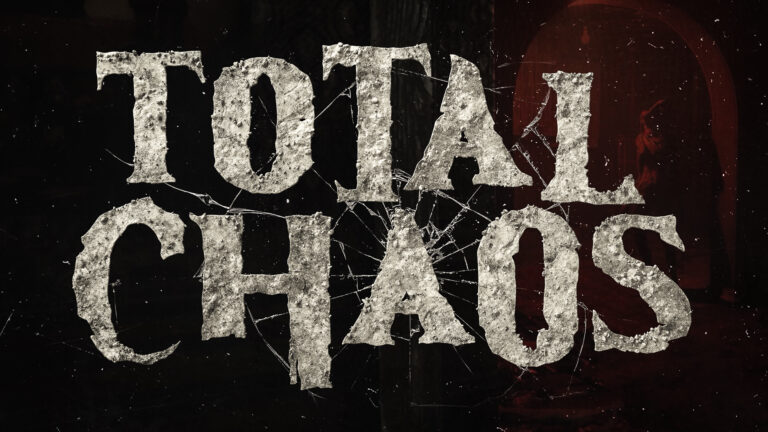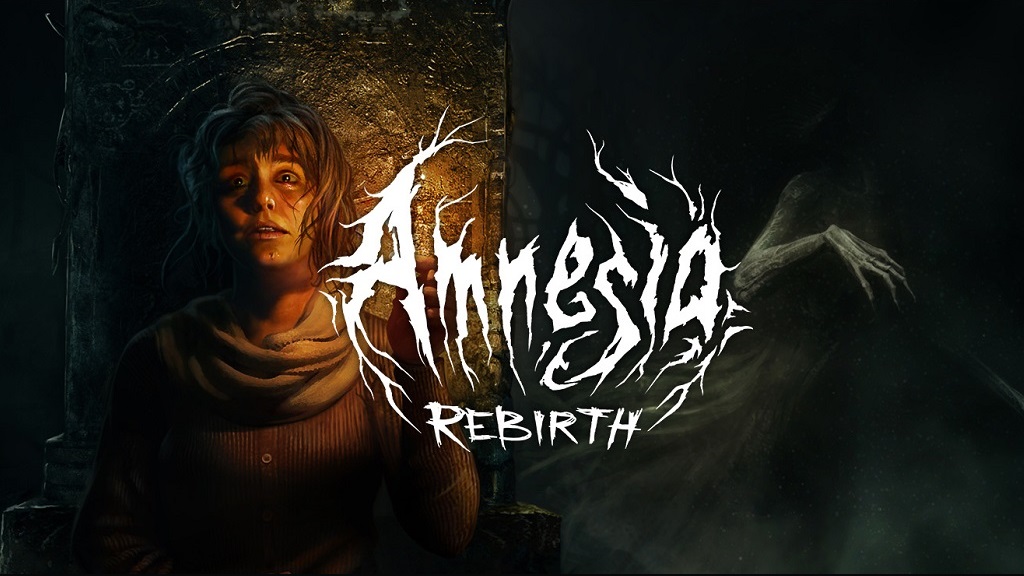
Back in 2010, when Frictional Games released the first Amnesia game, it quickly became an industry favorite that kicked off a decade of games that followed its format and style. A few years later, a spinoff game in the series was released, entitled A Machine For Pigs. Developed by a different studio, the game expanded the universe of Amnesia and told a compelling, self-contained story while making some upgrades to the engine and gameplay. In 2015, Frictional Games returned to release SOMA, a game that shared several similarities with Amnesia but chose to take a more existential sci-fi approach to the project and start a new universe of storytelling.
Now, a full ten years after the release of The Dark Descent, Frictional has finally returned with a full-on sequel to their pivotal series, with Amnesia: Rebirth. The development team didn’t share too much info about what the game would be like before release, leaving a certain air of mystery to the game that most players wouldn’t unravel until it was in their hands.
Now that the game is in our hands, we can take a look to see if Frictional was able to make a successful follow-up to their previous work and change the industry once again all these years later.
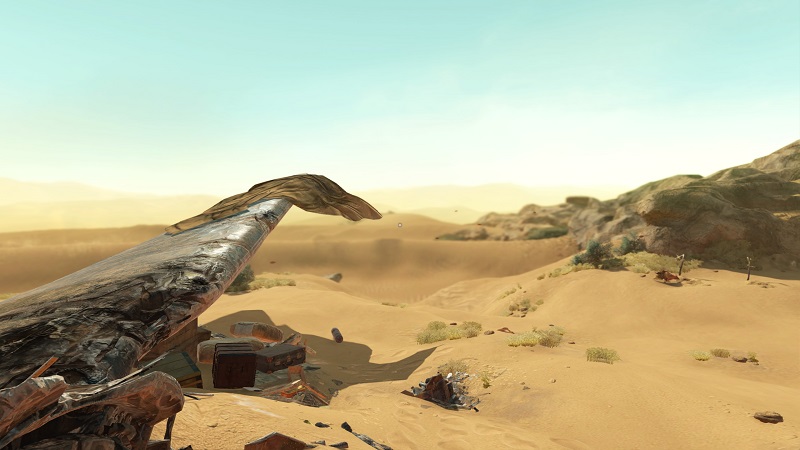
Amnesia: Rebirth starts you out in the shoes of Tasi, a plane crash survivor who (similar to the other Amnesia games) lost her memories by drinking a chemical to ease her pain. After leaving the wreckage of the plane behind, she sets out into the Algerian desert to find her friends and get some help. As things start to build, you can almost immediately see the similarities — and even references — to the other Amnesia games.
One of the first things you’ll notice in Amnesia: Rebirth are the gorgeous visuals, starting with stunningly realized desert environments. All of the colors pop and effectively immerse you in this arid place, with the stark golden landscape engulfing you at every turn. You’re frequently thrown between the extreme sunlight of the desert and the deep darks of caves and structures in the early parts of the game. It’s an excellent and jarring juxtaposition that hasn’t quite been tackled this way in a horror game before.
Soon after going into your first cave, you’ll learn about the light-based gameplay system, which involves finding matchbooks in order to light various torches and candles to see in the dark. However, all of these torches and candles are stationary and cannot be carried with you. The matches burn out after a few seconds, so you must light the sources quickly before the match flame extinguishes.

The match system makes for an exciting and dynamic gameplay element that goes beyond just being able to see, as you must also light fires for other reasons. The system also provides a last-resort mobile lighting solution for dire situations. A lantern shows up later in the game but has extremely limited fuel and utility, to the point where lighting other sources with matches remains your best option, despite their limited quantity.
There’s also a fear system that actively changes based on your surroundings, such as being in darkness without a light source for too long or looking at dead bodies/enemies, which will distort and obscure your vision as your fear increases. This system is very similar to Dark Descent, but subtly more complex this time around.
I’ll try to avoid talking about certain parts of the story too much to avoid spoilers for those who are really invested in the lore of the series, but some points must be brought up for critique.
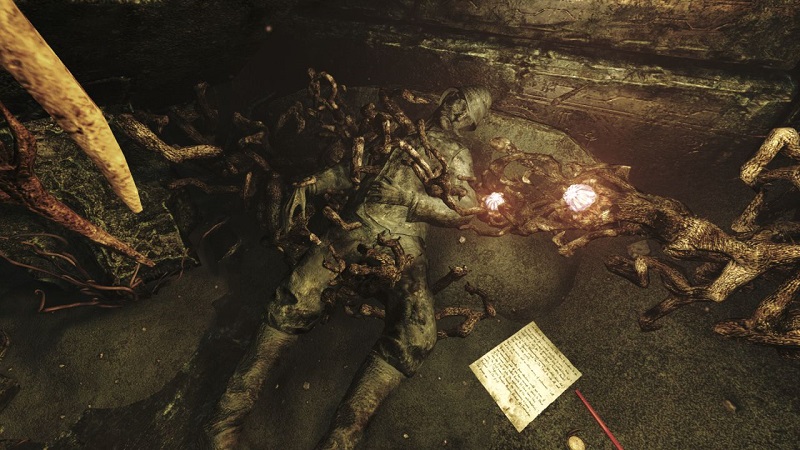
Similar to the other games in the series, Amnesia: Rebirth’s story is often told through various notes you’ll find scattered around the world. None of them are terribly interesting, but they do fill in a little backstory here and there, as well as progressively link the story to the events of Dark Descent. The new story takes place around 100 years after Dark Descent, so the link may not be as profound as you’d think, but there is definitely a deep connection between the two games.
Much of the story in Amnesia: Rebirth is unfortunately told through flashbacks and monologues, which get very tiresome and repetitive fairly quickly and manage to break the pacing in several spots.
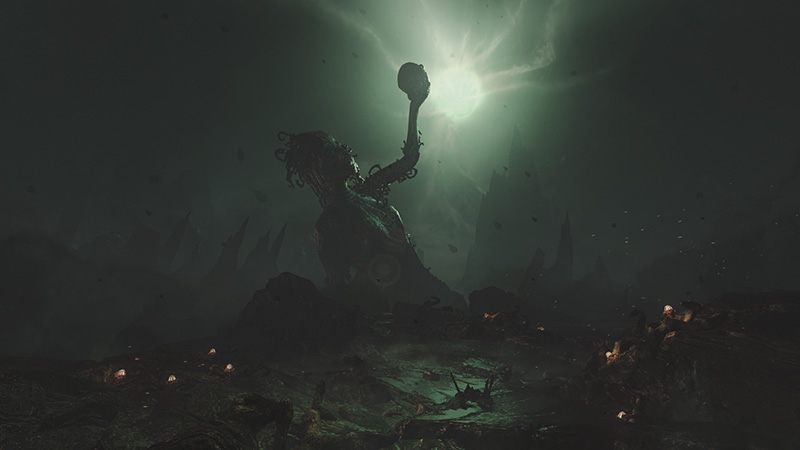
The overall themes of cosmic dread based around the end of mankind, as well as the British-colonialism versus-indigenous-cultures one, which were featured heavily in the other two Amnesia games, are somewhat present through most of Rebirth. However, there are some drastic shifts in tone throughout, and these overall themes end up taking a back seat after a certain point in the story.
After a short while, you’ll also start running into some puzzles to solve. Overall, they strike a great balance between being just complex enough to take a few minutes to figure out and being simple enough to keep the pacing going pretty well. They never get too esoteric or obtuse, which definitely works in the game’s favor.
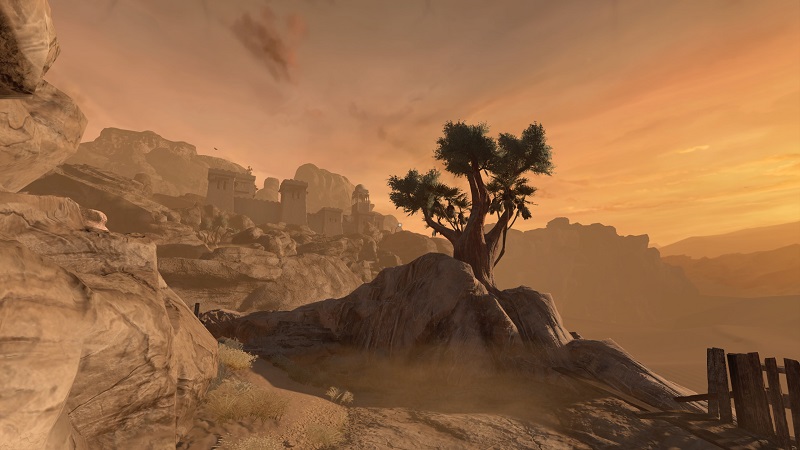
After the first few areas, you’ll run into an old military base, where you’ll start to see the desert-drama elements take a rest and the horror finally begin. In this location, you’ll also encounter the first enemy that poses a threat. It plays out like a slow burn, with little scares here and there that build up to some very intense encounters afterward.
The way the horror and chase scenes are handled in Amnesia: Rebirth is extremely tense and well done, whether you’re just being watched or stalked by an enemy, or in a full-speed chase. There are several different varieties of horror sequences throughout the game, and they’re easily some of the strongest sections, though there are some caveats.
One of the main caveats is the weak and half-baked stealth system featured in the game. It’s similar to The Dark Descent in many ways and feels equally useless, unsatisfying, and inconsistent. Thankfully, there aren’t too many sections where you have to rely on stealth to get through encounters, but it’s often more frustrating than it needs to be.
The extremely long death and respawn animations don’t help (they last around 30 seconds or so to get back to your last checkpoint). This is clearly not a loading screen, but just a really long animation meant for dramatic effect, which misses the mark and often briefly breaks the immersion.
Amnesia: Rebirth’s major flaws start to rear their head after the first major horror section at the military outpost. After this, the game starts to repeat itself in many ways, and its structure and pacing become rather formulaic. It starts to alternate between around 45 minutes to an hour of exploration, story, and puzzle-solving with no horror elements, and about 30 minutes of horror, then repeats this for the whole game.
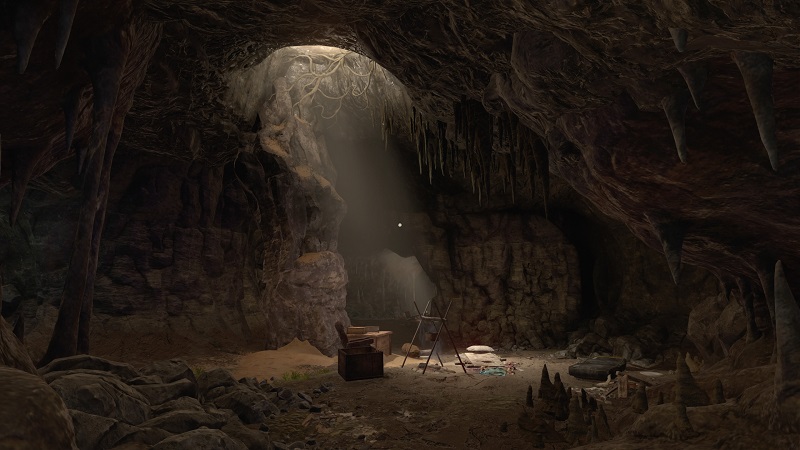
The jump between the two gameplay styles is generally not smooth and feels more like a major shift in tone, rather than a successful blend. The strong shifts also feel distinct enough that it takes away any potential tension that could’ve been used to great advantage during the exploration segments, and instead, you feel a clear line that signifies you’ve overcome the horror elements for a while and don’t need to feel afraid anymore.
On top of this major separation between game segments, Rebirth starts repeating the same kinds of storytelling sections and environments over and over again. It soon becomes a sequence of flashback, cave, dream, desert, horror, or something along those lines, and it fails to diversify much until very late in the game.
During the first “cycle” of Rebirth’s identifiable pattern is where another very strange and awkward element creeps in, occurring when Tasi remembers that she is pregnant. This discovery takes over every ounce of the story and even becomes an actual part of the gameplay. While the pregnancy part may be an infrequently-used idea within the genre of horror games, the way it’s handled here is very ham-fisted and intrusive to the immersion and consistency of the game.
Tasi’s entire characterization turns into nothing but fixating on her unborn child. Every line of dialogue, every thought, every dream, and even the gameplay itself warps to focus on the child instead of what was previously going on with the story. You have to take breaks from the progression of the game and even during stealth sections to pat your stomach and talk to the baby.
This also shifts most of the solid-but-standard storytelling elements into being extremely melodramatic, calculable, and badly executed. In turn, Tasi regresses from a strong female character who admirably confronts the horrors of her situation to an overly-emotional sack of tears for the entire remainder of the game. The fact that the game is entirely written by a man who themselves have not been through the motherhood experience first-hand seems to stick out like a sore thumb.
This leads to plenty more awkward moments as well, where [mild spoilers] you’ll have the lovely tasks of giving birth and breastfeeding a child in first-person; none of it feels very well-handled. These elements revolving around the child mostly feel over-written, ostentatious, and shamelessly mining for emotional sympathy from a certain audience.
Instead of the story remaining focused on the overall themes that ran through the other Amnesia games and even SOMA, it zeroes in on this very frantic story about motherhood that never really satisfies.
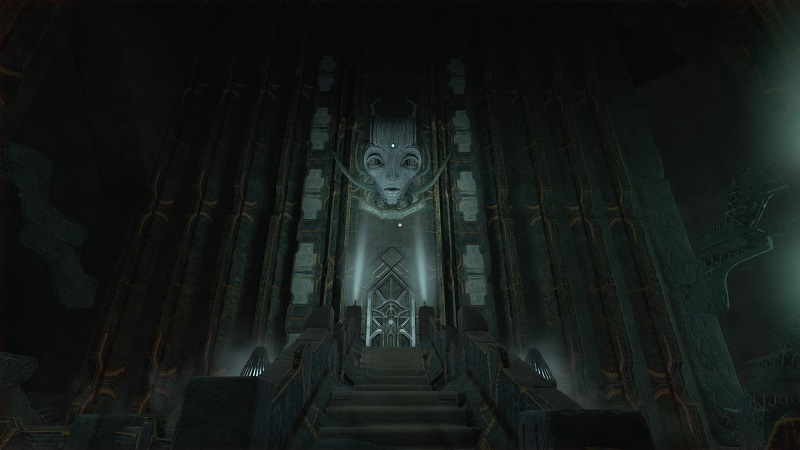
After completing the first few cycles of the game, another massive leap in tone occurs which takes it further from the lineage of the series, becoming more of a post-apocalyptic, dystopian sci-fi story. This is also accompanied by a major shift in aesthetics that makes it look and feel like you’re playing a Tomb Raider game inspired by Lovecraft and H.R. Giger; full of ancient alien sci-fi temples with gods and goddesses straight out of an Indiana Jones film.
This strange aesthetic tone change remains for most of the second half of the game, as do those previously mentioned negative story deviations. The outcome is that Amnesia: Rebirth felt like it ran out of ideas a few hours before it was over, and as a result was more and more of a chore to play.
Every story beat became more predictable and full of tropes — more like a bad Hollywood sci-fi movie with each passing minute. Thankfully, the horror sections remain very effective to the end, despite other aspects of the game falling apart by then. Unfortunately, the good doesn’t redeem the experience as a whole.
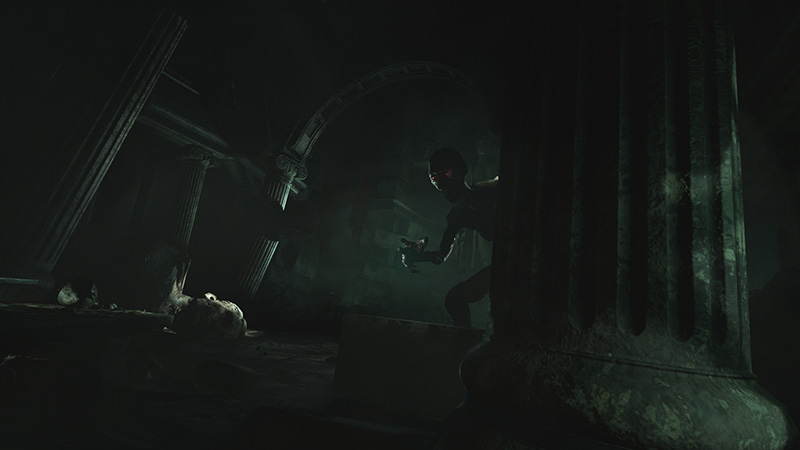
As far as some of the technical aspects, the sound, controls, and visuals are all quite well done, and technical performance is very solid, even on consoles, so there isn’t much to complain about in any of these departments. Frictional’s in-house game engine truly shines in their latest outing.
Rebirth will likely take around 8 hours to complete on a first playthrough, even if it becomes a slog long before that. It features tons of unskippable cutscenes and dialogues, so repeat playthroughs might only be slightly shorter in comparison.
In the end, Amnesia: Rebirth fails to move the genre forward and falls into several of the pitfalls that modern horror games suffer from. Frictional Games doubled down far too much on a pretentious, messy, and jumpy narrative that can’t stick to a theme to save its life, not to mention borrowing too many ideas from other media without meaningfully improving on any of them.
The result is a very confused game that has big ambitions and some great attributes but is unable to pull everything together into a tightly-knit package. It is a decent game, but not even close to being up to par with most of the previous work by Frictional and the Amnesia series.
 (6 / 10)
(6 / 10)
Above Average
 (6 / 10)
(6 / 10)Rely on Horror Review Score Guide
PC and PS4 review codes were provided by the publisher.

 IDOLxISxDEAD
IDOLxISxDEAD
